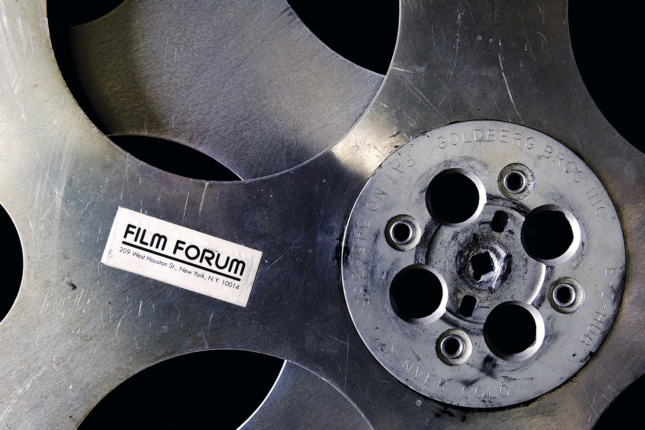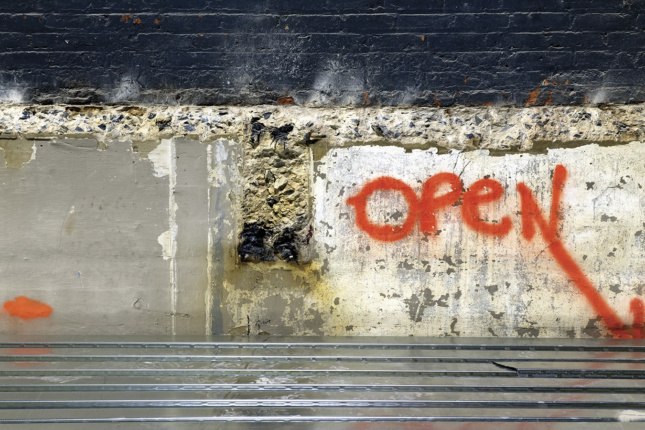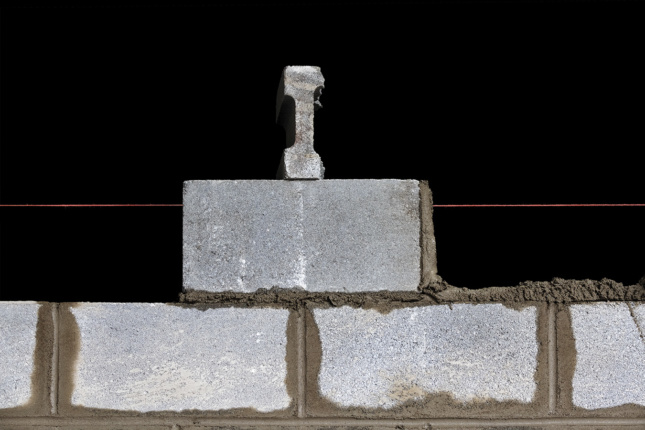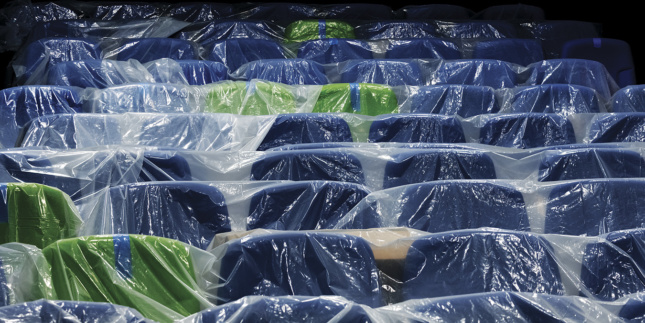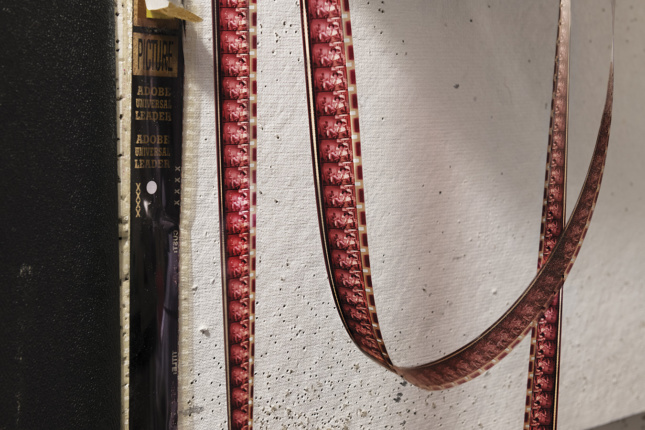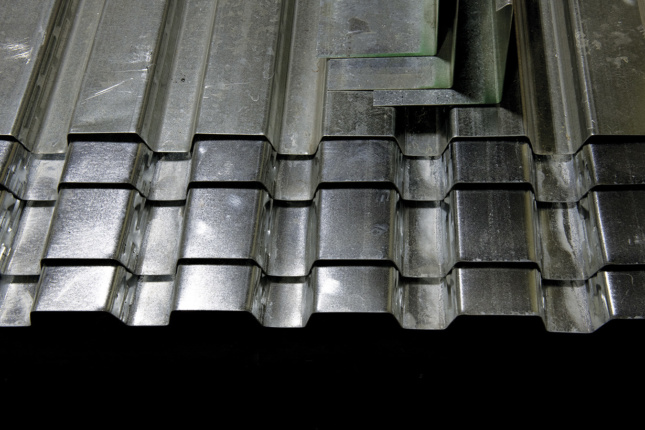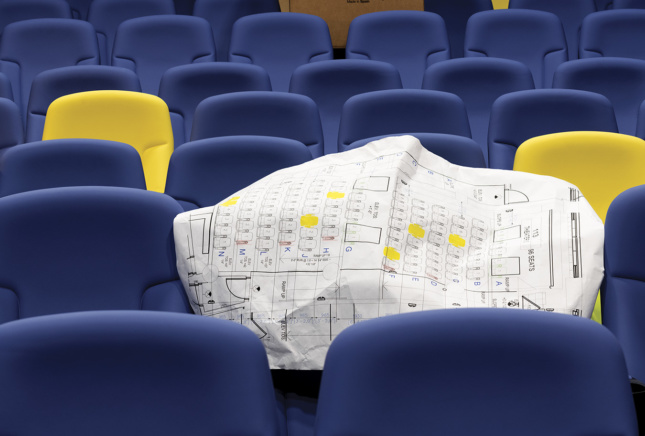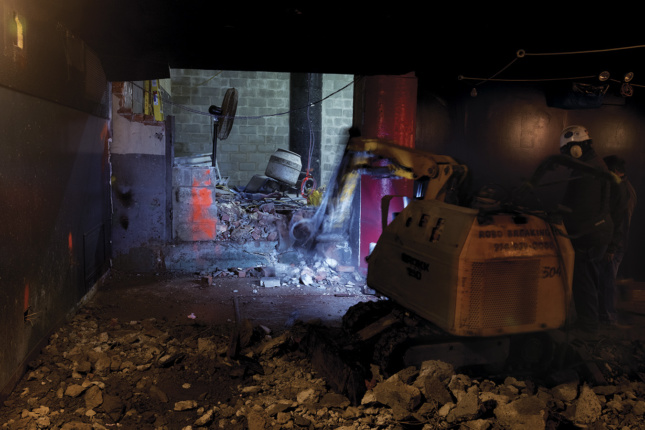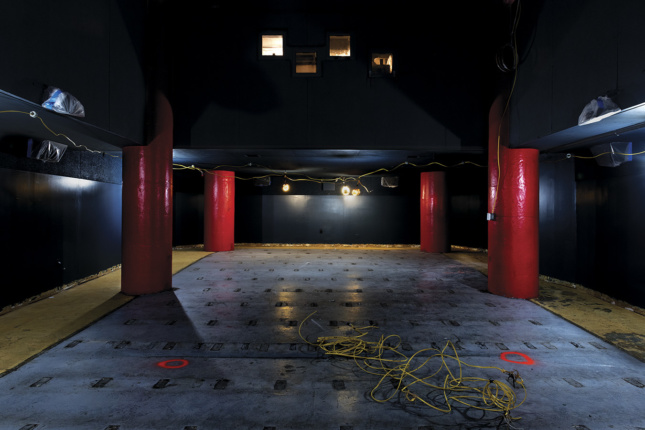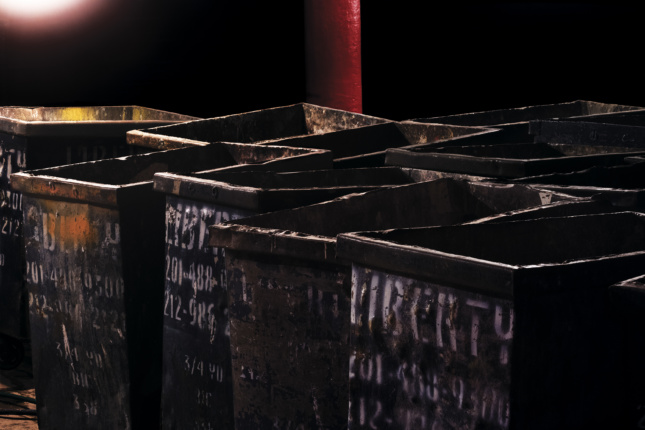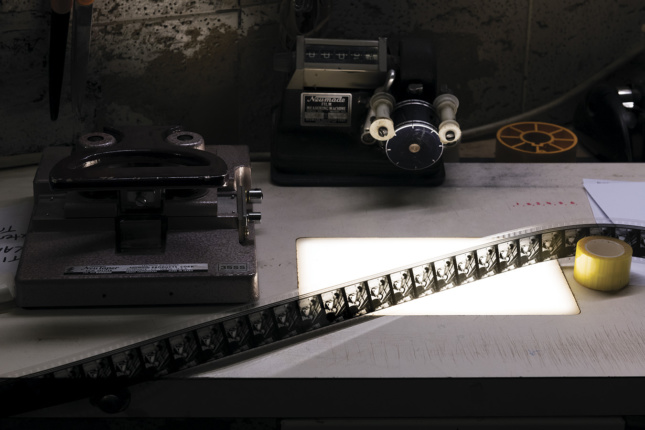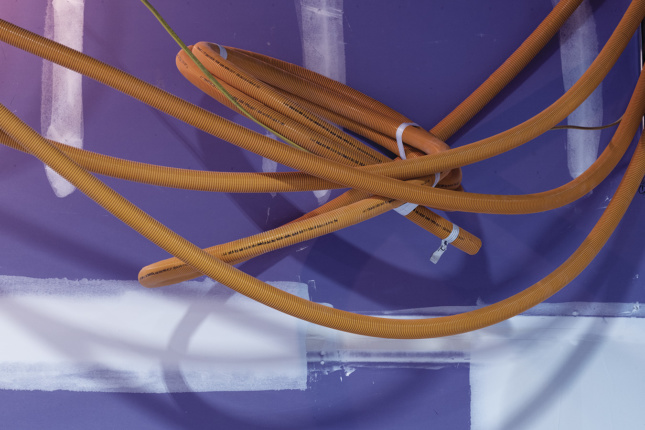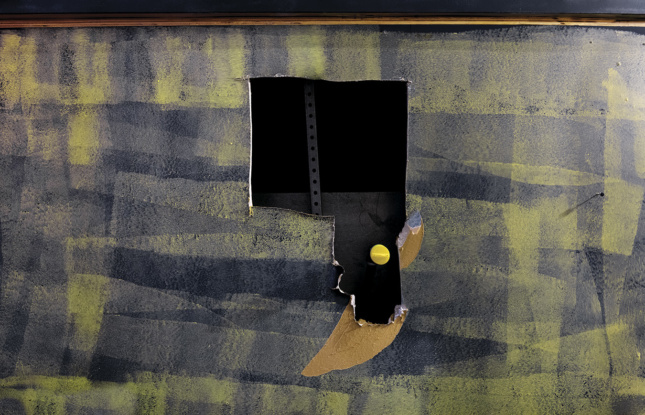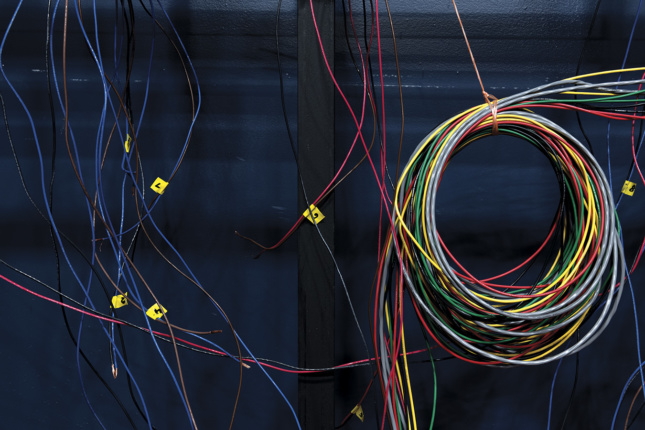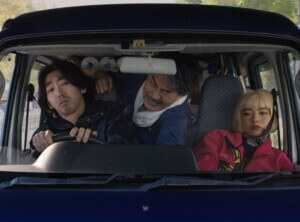The following is excerpted from Film Forum: Under Construction 2018.
The images that you see here were captured on a worksite for the expansion of Film Forum, a place where people gather with a group of strangers to watch a story unfold —something that is increasingly unusual these days. They are a celebration of an ancient ritual married to a modern technology. The technology develops but the ritual decays.
What do these photographs say about watching movies? What do they recall and what do they suggest? How is it that beneath the formal pleasures of their design, their abstraction, and their use of color, they conjure something concrete about shared experience?
Like a lot of abstractions, and certainly like many of Jan Staller’s photographs, these pictures are not only about a surface but the materiality below the surface. In this case the materials are the brick and mortar of the theater itself and the steel and brittle celluloid of projectors, reels and filmstrips—objects that look now like sacraments of the earliest technology of the art form. They are evocative because they are tactile.
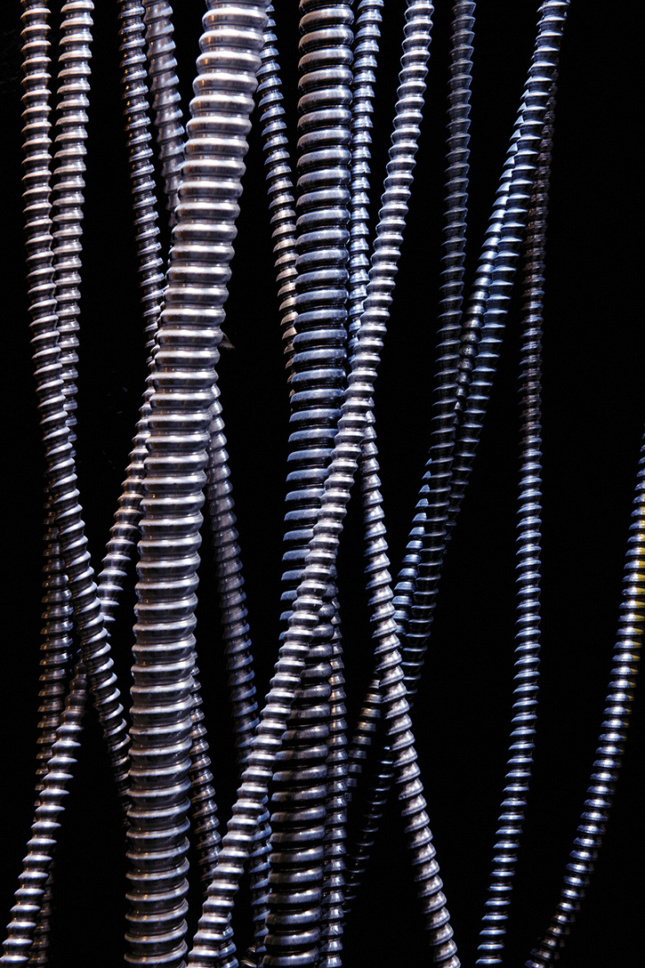
My first exposure to the movies was more sterile and electronic. It took place alone, in a dark room, late at night in front of a television set. In this respect, it was closer to the way that most people watch movies today. As I got older I went to movie theaters, spending hours of my youth in palaces called The Orpheum, The Lyric, and more prosaically (and appropriately), The Suburban World. There was something fundamentally different about going to a theater. The impact of the experience was magnified literally by the scale of its presentation and emotionally by the act of sharing it with a community. And just as importantly, by its appeal to the sensorium, something that most modern technology abjures. The theater was itself a machine, one that you entered, was turned on, and then would grind into action. Its constituent parts were hidden but somehow felt. That’s part of what these photographs evoke, but for me they also evoke memories of my early days as a film editor, when you felt the film in your hands and heard the clack of the sprockets as it ran through the machines.
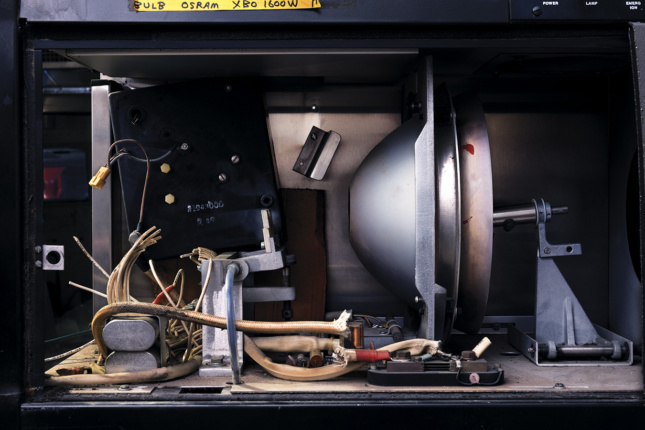
But before waxing too nostalgic about the older ways of doing things, it may be useful to think about two movies that I saw for the first time at Film Forum. They were both by F. W. Murnau, a German filmmaker who came to Hollywood in 1926. The first, Sunrise, was made in 1927 and is certainly one of the greatest movies of the silent period. It was a huge success, and William Fox, the man who had brought Murnau to America and who was the producer of Sunrise, asked him to do another movie. In his youth, Murnau had been something of a gear head—he was fascinated by cameras and new technology. In the interim between Sunrise and his next film for Fox, The City Girl, sound had been introduced. The new technology was alien to Murnau as an older man. He couldn’t reconcile it with his taste or his process and The City Girl was made and released as a silent film with title cards instead of dialogue. Watching it now one wonders what it would have been like otherwise. A cautionary tale about aging out of your era.
The movies are wedded to technology, and for better or worse as the technology advances it changes not only how they’re made, but what we actually see and how we watch them. At a certain point resistance seems quaint and misguided. The opportunities in most cases outweigh the things we lose. The sensual pleasures of pre-digital machines are probably lost forever, but the act of gathering to watch stories, to be part of an audience, would be dangerous to lose. It is ancient and fundamental. So let’s celebrate one of the few institutions that continues to expand that opportunity. These pictures do, and they do something else—they get under the skin.






